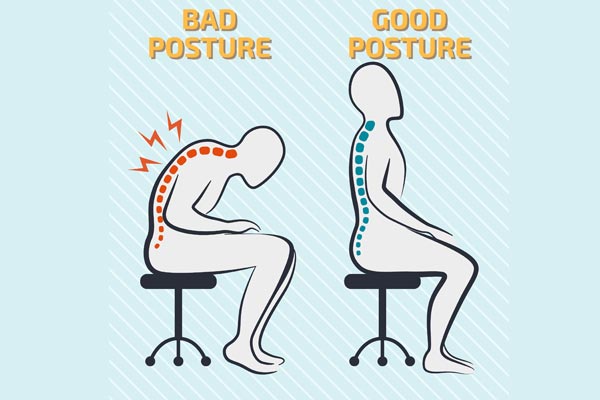
The Importance of Posture: Why It Matters for Your Health
In today’s fast-paced, technology-driven world, maintaining good posture is more important than ever. Many of us spend
Welcome to Our Health, and Wellness Blog
Stay informed and up-to-date with our health and wellness blog, your go-to resource for the latest and most effective treatments available. Whether you’re seeking relief from injury or looking for everyday wellness tips, our physio blog offers comprehensive guidance and support.
Discover the transformative power of chiropractic care through our insightful chiropractic blog posts. Additionally, delve into our massage blog posts to uncover the therapeutic advantages of massage. From stress reduction to boosting bodily functions, we reveal how regular massage can significantly enhance your health and relaxation.

In today’s fast-paced, technology-driven world, maintaining good posture is more important than ever. Many of us spend
What is chronic pain?
Chronic pain is any pain that lasts for more than 3 months, or past the expected healing times of the injured tissue.
You don’t necessarily experience pain all the time, not even every day.
For example, your pain could be:
Your pain could also be a result of a trauma or small injury, as a consequence of a disease, or it just started without any clear reason. It could present in many different ways, such as a sharp pain, a dull ache, a burning sensation, a painful cold, electric shocks, among others.
Can a physiotherapist help me via telehealth (online)?
Yes, actually there’s growing evidence1 that online delivered physiotherapy, also called telehealth or virtual care, is as effective as usual care (face-to-face) across many different conditions, including chronic pain.
According to the Australian Health Practitioner Regulation Agency (AHPRA) practitioners and consumers are increasingly choosing virtual care alternatives as we continue to see growth in the adoption of technology, online prescribing and the use of health ‘apps’. What was once seen as a temporary approach to enable healthcare in a global pandemic is now widely accepted as just another way to see your practitioner.
According to data from the Australian Bureau of Statistics2 over 25 per cent of Australians have had at least one telehealth consultation for their own health in the last 12 months. Of those who had a telehealth consultation, 89.2% reported that they would use telehealth for a consultation again if it was offered. This was an increase from 87.7% in 2022-23.
1 Hinman, Rana S et al. Telerehabilitation consultations with a physiotherapist for chronic knee pain versus in-person consultations in Australia: the PEAK non-inferiority randomised controlled trial. The Lancet, Volume 403, Issue 10433, 1267 – 1278 (2024)
1 Whiters, Hanna G et al. Remotely delivered physiotherapy is as effective as face-to-face physiotherapy for
musculoskeletal conditions (REFORM): a randomised trial. Journal of Physiotherapy 70 (2024) 124–133
How does online physiotherapy differs from usual physiotherapy?
In cases of persistent pain, the connection between your original injury and the pain you feel tends to weaken over time. This means that your pain is less about the current condition of your tissues or their stage of healing, and more about other contributing factors. Successfully managing persistent pain often involves identifying and addressing these factors — things like fear of movement, muscle weakness, poor overall health, high stress levels, poor sleep, and other psychological or social influences.
While hands-on techniques like soft tissue massage, joint mobilisation or manipulation, shockwave therapy, laser therapy, and taping can play a helpful role, they are typically complementary. The core of effective treatment lies in understanding what’s driving your pain now — not just what caused it in the first place.
Together, we’ll identify the factors most relevant to your pain and create a plan that helps you regain confidence and get moving again.
What happens in an online consultation for chronic pain management?
When you book your initial consultation, you’ll be asked to briefly describe the reason for your appointment. Based on that, we’ll send you a few questionnaires to complete before your first appointment. These help me understand your current situation and relevant history, to better assist you during your first appointment, making the most of your time together.
During your first appointment (which lasts about 60 to 90 minutes), your physiotherapist will go through your pain history, ask further questions, and guide you through some simple tests. He will also share his interpretation of your condition and introduce key concepts that are important for your treatment.
The information collected through the pre-assessment and our first encounter will help me more comprehensively understand your unique presentation, including the predominant pain mechanism present, the temporal course of your pain, the percentage of your body affected by pain and how much suffering and disability has been caused by the pain.
After this session, if not already arranged, you’ll be booked for a second appointment within 1–2 weeks.
In your second appointment, your physiotherapist will present your Persistent Pain Management Plan. This, includes a detailed explanation of the factors most likely contributing to your pain (as exemplified on the image below – radar graph), along with self-management strategies tailored to your needs. These may include heat or cold therapy, self-massage, specific stretches, use of a TENS machine, a personalised exercise program, and gradual exposure to activities you may be avoiding due to pain.
Follow-ups usually happen in a more spaced fashion than with usual physiotherapy, with fortnightly/monthly reviews at the start, progressing to appointments every 2-6 months.